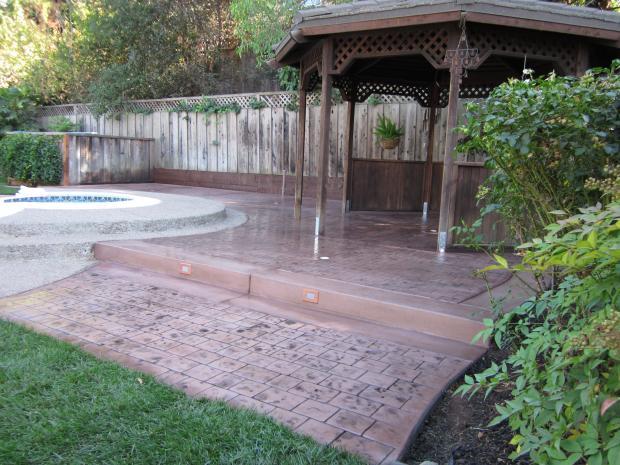
Any type of household mold can create serious health risks to you and your family. So any time you see mold growing on the surface of concrete, make sure you take immediate action to remedy the situation. But the best way to eliminate mold is through preventing it in the first place. Here are a few tips to keep in mind when dealing with concrete mold.
Dangers
Mold spores can cause many types of health risks, especially to those susceptible to allergies and respiratory problems (such as asthma), and they can cause inflammatory rashes, headaches, and other flu-like symptoms. If anyone in the house is experiencing these symptoms it may be an indicator of mold. So have your house professionally inspected because mold can be deceiving: you don’t have to see it for it to exist. Though a lot of mold is obvious (dark black splotches, rotting grey areas), a lot of it is invisible and hides in hard to see areas. So whenever you’re around concrete mold, make sure to take the proper precautions. Always wear protection: gloves, breathing masks, and eye protection. And any exposed materials that can be easily removed should be discarded as soon as possible.
Prevention
Mold is often caused by excess condensation or sitting water, and often occurs after flooding or leakage. The first step in home mold inspection & remediation is to identify and fix any leaks and remove any standing water. Also, you may want to waterproof your concrete by using special products that are out on the market. To prevent condensation that may form, add extra insulation to an area and create plenty of circulation in dark, dank areas (basements and garages) by utilizing fans, dehumidifiers, or other ventilation systems to avoid moisture build-up.
Basements commonly generate concrete mold, so it may be best not to carpet these areas since mold can easily enter and stay in the fibers. To prevent flooding make sure all piping and gutter systems are properly working so water is always diverted away from the house. It may be a good idea to put a plastic cover over crawlspaces and windows leading to a basement as to prevent any ground-level water from coming in. Also, avoid storing papers, clothing, or other forms of “mold fodder” in these danker areas.
Removing Mold
Most concrete mold can be cleaned with strong solutions of bleach, which come with their own risks and irritations. And even after using these household cleaning products, a lot of the invisible mold may still be able to thrive in out-of-reach spaces. Therefore the best way to get rid of it (especially in cases of large contamination areas) is to call a professional contractor. Make sure these contractors have specialized training in mold removal before hiring, and make sure you hire two different companies: one to inspect, one to clean-up. It may be a conflict of interest for the removal contractor to also investigate your concrete mold problem, so make sure you consult with a separate professional for inspection before you employ a mold removal specialist.
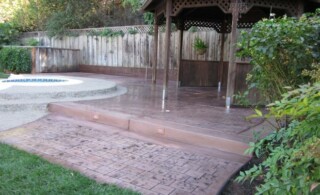 Concrete Cleaning: An Easy Makeover For Your Exterior
Concrete Cleaning: An Easy Makeover For Your Exterior 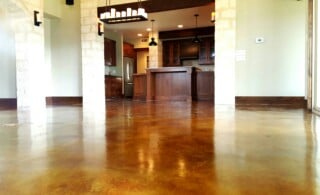 Concrete Flooring – Solid as a Rock
Concrete Flooring – Solid as a Rock 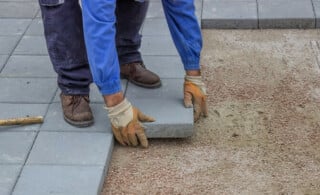 How to Choose a Concrete Contractor
How to Choose a Concrete Contractor  Explore the Possibilities of Concrete Siding
Explore the Possibilities of Concrete Siding 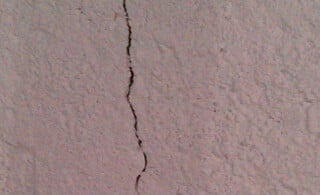 Concrete Foundation Problems
Concrete Foundation Problems 

I live in a condo building built upon a concrete slab. My downstairs neighbor gets serious mold, condensation, pooling in her bathroom and kitchen. Is there anything one can do?
Yes Eleanor, tell them to get a dehumidifier and to install extra extractor fans that vent to the outdoors.
I have mould growing on concrete drive way it’s a light green, it’s on the south, Eastern side of house that gets stuff on sun light, any ideas of stopping it, as I regularly pressure wash it off
I have mold in an old concrete birdbath that sits on my deck. I see the birds occasionally come to drink from it. Is this safe for them and how can I remove it safely myself. Kathy